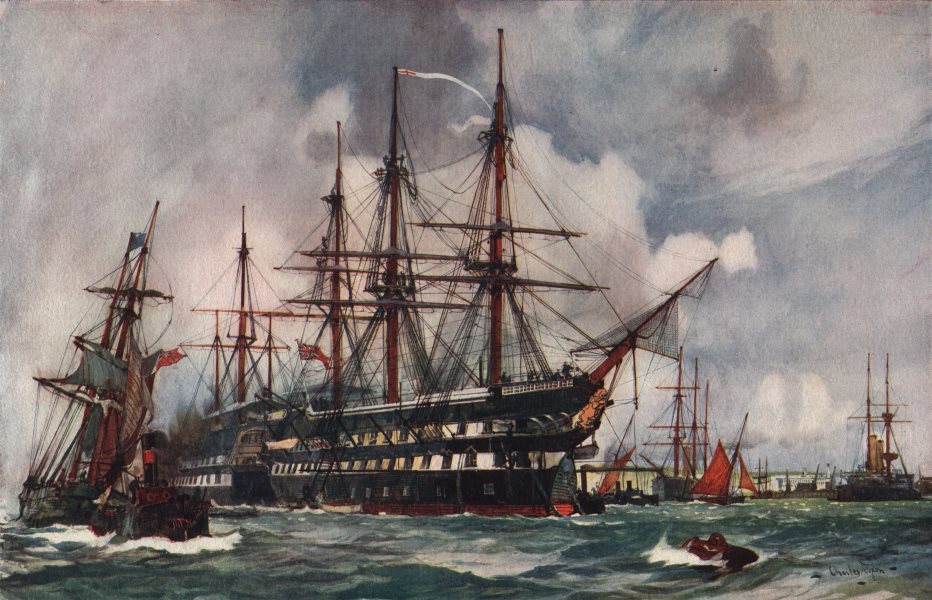Naval History of South Asia and Underwater Domain Awareness
Prithwiraj Gupta speculates whether communities involved in the pearl fishing process along the Indian coast had a role to play in the naval history of those regions
The Indian Ocean has been one of the most important oceans in the world, given its role in connecting the continents of Asia and Europe for at least 2,000 years. The 21st century has seen a resurgence in its significance due to the important trade routes that pass through it, connecting the oil belt of the Middle East with the rapidly developing powers of South and East Asia. The current geopolitics of the region has been the subject of numerous studies by think tanks, academia and governments over the past several years. Many of these have gone on to analyse the growing naval forces in the region as well. However, there have been far fewer studies on how naval forces in this region have been shaped throughout history and if there is anything that can be learnt from historic developments in the art of naval operations in the waters off the Indian subcontinent.
Since the 20th century, the operational space for naval forces has included both the surface as well as the depths of the oceans. This has led to an increased requirement for knowledge of what lies below the surface of the oceans and how best to utilise ocean resources to safeguard national interests, ensure international stability, and promote a more sustainable ocean environment. Keeping in mind the UDA Framework, this essay attempts to see if such a concept can be linked in any way to the past.
John B. Hattendorf remarks in his book Doing Naval History that ‘Naval history needs to appear in a new, corrected and amended model, linking it to general history while also improving methods for the specialised study of the subject.’ In case of the naval history of South Asia, the field however needs to establish itself as a prominent area in the study of South Asian history, before it moves forward in the direction which Hattendorf envisaged in his book. So far, the study of naval history of this region has been fairly restricted in scope. The foundations for such a study were laid in the early 20th century with Radhakumud Mookeri’s pioneering work titled Indian Shipping. However, with the exception of one significantly shorter volume of the same name, authored by Ashok Mehta, the field remains untouched by academics to a significant extent. Much of the current study of South Asian maritime and naval history has been carried out by the naval establishment itself, leading to some factually detailed volumes on the subject. Over the last decade, the maritime history of South Asia has been researched by academics looking at maritime South Asia from the perspective of economic and social history, including issues of piracy. Research in naval history has been more limited, with Amarendra Kumar’s research on the Maratha navy of the 17th and 18th centuries, some essays by military historian Kaushik Roy, and some essays that can be found in the Proceedings of the Indian History Congress. Such a lack of research has left a significant gap in the knowledge of past naval capabilities and achievements from a pan-Indian perspective. Furthermore, it would lead to the development of a new model for the study of naval history, specific to the Indian Ocean region and linking it to the wider maritime environment. Such a perspective is essential for two reasons. First, it would allow for an integrated study of the histories of capabilities of naval forces into a unified historical narrative and look for specific regional variations. Secondly, with the IOR assuming an increasing geopolitical significance, it is imperative for India to attempt to show its longstanding presence in the region from a historical perspective.
Underwater Domain Awareness is very much a 21st century concept, although with the advent of submarine warfare in the 20th century, there must have been a requirement to know more about the new operational environment. It is hard to find a parallel for the same in historical times when underwater technologies were limited to the ability of the human body to adapt to the underwater environment. One of the few occupations involving underwater activity to some degree was that of pearl fishing, wherein divers from certain maritime communities in parts of the world would dive underwater to extract oysters. Pearls have been an important trade commodity since times immemorial and have been readily available in certain parts of the world. In South Asia, pearls were harvested primarily from the far south – Malabar and Coromandel. The Gulf of Mannar was a particularly prominent location for pearl fisheries and attracted numerous merchants. Pearls were also obtained from Sopara, according to Al Idrisi.
Pearl fishing methods were similar in Indian and Arabian coasts, according to early European statements. Off the Arab coast, pearls were collected at a depth of six fathoms. It was a test of the divers’ physical endurance and skill underwater and was facilitated by a number of improvisations to protect and aid them in their jobs, given that they had to stay under water for as long as two hours at a stretch with no, or very primitive, artificial support. The ears of the divers were plugged with cotton wool or oil and the nostrils were either plugged with the same materials or with tortoise shell clips; breathing was facilitated possibly through reed pipes or, unbelievably, through the divers’ ears. Divers also did not dive into the water but descended using a rope tied to a stone. According to Al Idrisi, the boats for pearl fishing moved in flotillas of 30-40 vessels led by an experienced pilot, who controlled and directed the process. Off the Arab coast, the diving was generally done by Arabs from eastern and southern Arabia. In case of the Indian subcontinent, while the process of collecting pearls was similar, it must have been carried out mostly by local maritime populaces around the pearl fishing zones. Sangam literature mentions a community called parathava, who were primarily fisherfolk engaged in pearl fishing. The Periplus of the Erythrean Sea, however, mentions that diving for pearls was done by condemned criminals near Korkai. It may be that the people involved in diving may have differed locally in some cases, but generally it can be assumed that certain communities were traditionally involved in the process.
While it is difficult to connect such activities to a naval activity in these regions, it may be said that given the specialised knowledge possessed by these maritime communities, it would have been natural for them to be taken into naval service when required. Through most of history, the size of navies would have fluctuated according to the needs of the time and it would have affected the recruitment of people. But given the absence of standardised training, the specialised knowledge and coastal skills of maritime peoples may have been in high demand to man the naval war machineries. It may be hoped that further research into the communities involved in pearl diving would not only yield information about their role in naval activities but also provide us with their knowledge of the underwater world from a human perspective. This may be able to aid the cause of UDA in the Indian Ocean in its own limited way.

Prithwiraj Gupta
About Author
Research Scholar, Maritime Research Center, Pune


